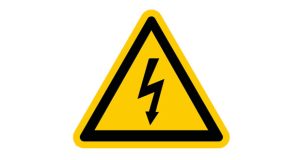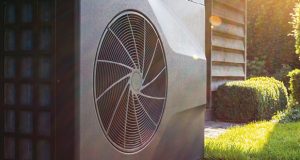 Until the majority of the population has been vaccinated it is critical that workplaces maintain good levels of ventilation to help reduce the risk of airborne transmission says Hywel Davies, Technical Director of the Chartered Institution of Building Services Engineers (CIBSE)
Until the majority of the population has been vaccinated it is critical that workplaces maintain good levels of ventilation to help reduce the risk of airborne transmission says Hywel Davies, Technical Director of the Chartered Institution of Building Services Engineers (CIBSE)
Assuming the vaccine roll-out goes to plan, businesses will still need to operate strict COVID-19 measures to ensure their staff and visitors are protected. The situation is evolving: the scale of effectiveness of the vaccine is still to emerge; how long vaccine-induced protection will last has yet to be established; and how effectively the vaccine will reduce transmission is still unknown.
The situation is under review, but there is an expectation that restrictions could be lifted so that businesses could be reopening as early as Easter, when a large proportion of the working age population may not have been vaccinated. That means the focus in workplaces and other multi-occupant spaces, especially those open to the public, must remain on limiting transmission to prevent the spread of Coronavirus to un-vaccinated people.
Advice from the Government’s Scientific Advisory Group for Emergencies (SAGE) in its document Role of Ventilation in Controlling SARS-CoV-2 Transmission(i), is that “Ventilation should be integral to the COVID-19 risk mitigation strategy for all multi-occupant public buildings and workplaces”.
The SAGE publication follows the World Health Organisation’s acknowledgement last July of the possibility of airborne transmission of Coronavirus. This in turn confirmed the lead provided by the Chartered Institution of Building Services Engineers (CIBSE) in its COVID-19 Ventilation Guidance, issued in May, and referenced in the SAGE document.
The need for effective ventilation in helping limit the spread of COVID-19 is based on growing evidence that Coronavirus can be spread by tiny particles called aerosols.
The acts of breathing, talking, coughing and sneezing all produce droplets and aerosols that may, if the host is infected, contain pathogens. Larger droplets fall by gravity onto surfaces within 1 – 2m from the source, which is why 2m social distancing is recommended. The droplets fall onto surfaces and can therefore get onto hands and eating utensils – hence the importance of regular hand washing and avoiding touching the face. Smaller aerosols, however, can stay airborne for hours, which enables them to travel longer distances where they could infect secondary hosts, particularly in poorly ventilated spaces.
The advice from SAGE, based on modelling, is that “exposure to aerosols approximately halves when the ventilation rate is doubled”. This is in line with the underlying principle adopted by CIBSE which is: dilute and ultimately remove airborne pathogens as much as possible from a space by exhausting them to the outside to reduce the chance they will be deposited on surfaces or inhaled by room users.
In practice this means taking steps to increase both the supply of outside air and the exhaust ventilation rate in buildings as much as is reasonably possible while minimising, or eliminating, any recirculated air.
MECHANICAL SYSTEMS
In buildings with mechanical ventilation systems a key intervention recommended by CIBSE is to extend the systems’ operation times to start the ventilation at least an hour before building usage time and to run the system for at least an hour at the end of usage to help purge the building of any aerosols.
Similarly, for demand-controlled ventilation systems where the rate of fresh air supply is adjusted to maintain a minimum CO2 level, CIBSE recommends changing the CO2 set point to a lower value to help maximise the flow of outside air.
CIBSE also recommends that air is not recirculated between spaces, rooms or zones occupied by different groups of people, unless recirculation is the only way of maintaining adequate levels of outside air to occupied spaces. Systems with thermal wheels should be inspected by a competent person to assess the risk of air leaking from the exhaust flow into the supply air and to adjust the system to eliminate any transfer which could carry viral material into the supply air stream.
If the ventilation rate in a space is designed, constructed and maintained at current design standards, then SAGE says the risk of aerosol transmission is likely to be low. In most workplaces and public environments, the Advisory Group say this equates to an outside air supply rate of 8-10 l/s/person; which is the minimum outside air supply rate recommended by CIBSE and also satisfies the building and workplace regulations.
Providing effective ventilation is more of a challenge in older buildings, particularly where systems may not have been designed in line with current ventilation standards. According to SAGE, the risk of aerosol transmission is likely to be significantly higher in poorly ventilated multi-occupant spaces, where the supply of outside air is low (below 5 l/s/person).
CIBSE’s COVID-19 Ventilation Guidance document(ii) provides information to help building owners and operators understand the types of ventilation systems commonly encountered in buildings and how these can best be used to reduce the risks of airborne infection.
The Guide will help building managers and those who operate and maintain building systems to identify those areas of a building and elements of ventilation systems that may need particular attention to reduce the risks to the building occupants. CIBSE’s general advice is that when it is reasonable to do so, ventilation rates should be increased as much as reasonably possible without compromising thermal comfort.





